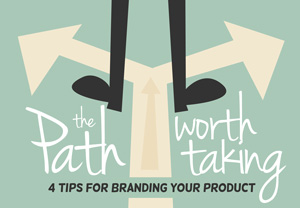 I recently received a frantic call asking for help from a new client who is launching a children’s product. She realized that the path she chose to get to a final identity with effective packaging graphics was not working. At the time, she didn’t think she had options: She assumed that since her budget was limited, she would only be able to use a student designer.
I recently received a frantic call asking for help from a new client who is launching a children’s product. She realized that the path she chose to get to a final identity with effective packaging graphics was not working. At the time, she didn’t think she had options: She assumed that since her budget was limited, she would only be able to use a student designer.
That client certainly isn’t the first person to express these concerns. The good news is that such mistakes are easily addressable. In fact, you can usually avoid these pitfalls by finding the right strategic partner for your branding project. With that in mind, I thought it might be helpful to share a few of the tips I’ve learned along the way.
1. Be selective with your branding design partner.
Make sure you have a strong team working with you that includes an account manager, designer and strategist. Don’t assume that you have limited choices because of limited funds. You can still find great consultants, from smaller agencies to larger ones. If they believe in your project and are as passionate as you are about your vision, they will find a way to make it work. The important thing is to remember you are not in it alone. The right partner will guide you throughout the package design process, work within your timeframe and budget, and map out the best approach to meet your end goal. They should make you feel at ease and that you are in capable hands.
2. Ask the right questions.
There are so many points to consider when you think about branding your product including:
- What does my package need to communicate?
- What kind of structure should my product sit in?
- What’s my big idea, and how can I make my product stand out on shelf and differentiate itself from everyone else?
3. Put together a creative brief to help you crystallize your vision and make sense of it all.
This document will be shared with your branding and design consultant. It should capture your vision, story, journey and any additional pertinent background information you have:
- Who you think the target audience is
- How you see your brand positioned in the marketplace
- Who your competitors are
Always share any visual inspiration to inspire your new team as well as mandatory information that must be included on your packaging, such as legal content.
I created a creative brief template that I give to my clients to help them organize their thoughts and use at all kickoffs.
The brief will help your design partner understand the scope of work necessary to get your project done correctly, what information might be lacking, and any information which will allow him or her to start building a tailored approach, a timeline and a budget.
4. Allocate your money and start to create a budget.
You need to consider all costs when taking on any identity and packaging design projects. Don’t only consider the obvious costs; remember that there will be other “hidden” costs. For example, are you looking to have your designer create a brand new concept for your package that your product will sit in, or will you use stock structures? There is a difference in cost when considering your options. A good, experienced partner will know the tricks of the trade, and he or she may create bespoke aspects of a stock structure so it seems like a new and innovative pack, yet at less of a cost than a custom housing.
You should have an idea of how much money you’ll need to set aside for the final artwork for your packaging. After the design is complete, and you finalize all graphic elements on the pack, you need to understand how to recreate the graphics that you signed off on as final art. If it is photography, you must consider if you are going to pay for a photo shoot or pay to license the images that were used on the layout. Or, would you consider having an illustrator recreate those images instead?
These are just a few fundamental yet necessary considerations to work out as you take on the next phase of your journey. Hopefully these questions will help you begin to see your options more clearly, approach the project in a thoughtful and organized manner, and help create parameters to guide you through what could otherwise seem like a daunting experience.
Once you have come up with your brilliant initial idea you have already successfully accomplished the hardest part. From this point on, it’s simply up to you and your partner to make it happen and connect with the consumer as you introduce your new brand and packaging. Above all, always remember that working hand in hand with a trusted partner ensures your continued success in selling your brand. Good luck on what will prove to be an extraordinary and exciting new journey!

